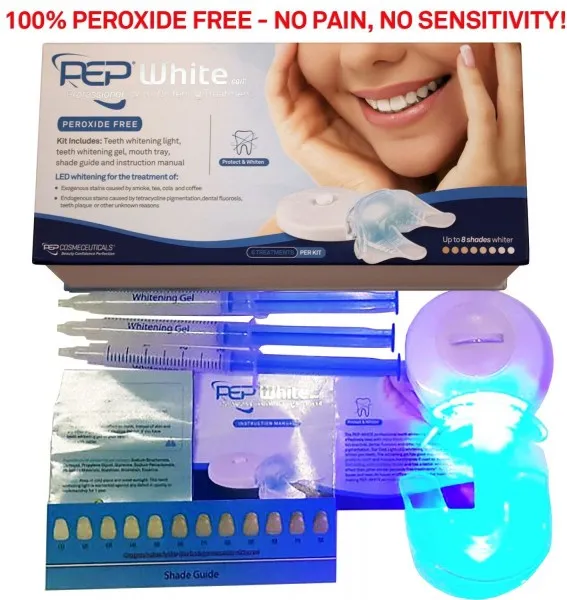What Is Teeth Whitening?
Teeth whitening is a popular cosmetic dental procedure designed to lighten the shade of your teeth, giving you a brighter and more confident smile. Over time, teeth can become stained or discolored due to various factors such as aging, the consumption of certain foods and drinks (coffee, tea, red wine), smoking, and certain medications. Teeth whitening treatments work by using bleaching agents to break down these stains, effectively restoring the natural whiteness of your teeth or even surpassing it. The process is generally safe and effective, but it’s essential to understand the different methods available and what to expect before undergoing any treatment. There are different options available in the UK, ranging from professional treatments performed by dentists to over-the-counter products you can use at home. The best approach depends on your individual needs, the severity of the staining, and your desired outcome.
Types of Teeth Whitening Available in the UK
In the UK, a variety of teeth whitening options are available, catering to different budgets, preferences, and the degree of whitening desired. These methods can generally be categorized into professional treatments administered by dental professionals and over-the-counter products available for home use. Each type has its own set of advantages and potential drawbacks, so it’s crucial to consider them before making a decision. Consulting with a dentist is always recommended to determine the most suitable option for your specific dental health and aesthetic goals. Professional treatments often provide quicker and more dramatic results, while over-the-counter products offer convenience and affordability, though they may not be as effective for severe staining.
Professional Teeth Whitening
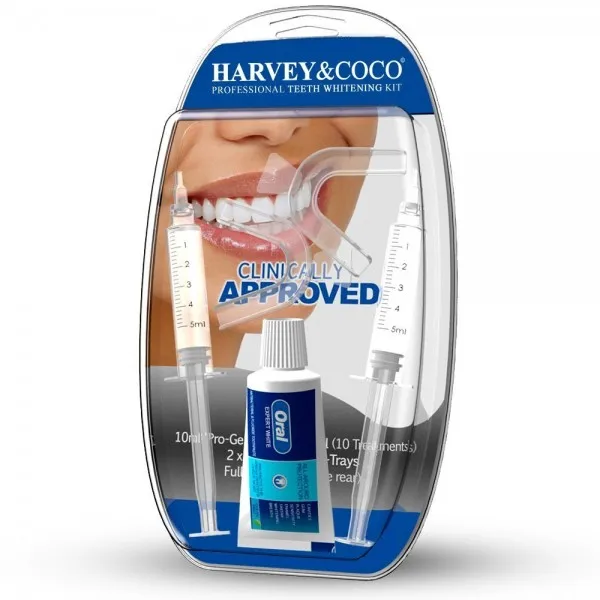
Professional teeth whitening is performed by a dentist in a clinical setting, ensuring safe and effective results. This method typically involves using a higher concentration of bleaching agents than those found in over-the-counter products. The dentist will first assess your oral health and determine if teeth whitening is appropriate for you. They will then protect your gums and soft tissues before applying the whitening solution to your teeth. The process often includes multiple applications of the whitening agent, sometimes with the aid of a special light to accelerate the bleaching process. Professional whitening often yields dramatic results in a single visit, making it a popular choice for those seeking quick and significant improvement in their smile’s appearance. The entire procedure is carefully monitored, minimizing risks and ensuring optimal outcomes.
In-Office Whitening
In-office whitening, a sub-category of professional teeth whitening, offers the fastest results. The dentist applies a high-concentration bleaching gel to your teeth, and a special light or laser is often used to activate and enhance the whitening process. This procedure is typically completed in about an hour, and you can leave the office with a significantly brighter smile. Before the procedure, the dentist will isolate your gums with a protective barrier to prevent irritation from the bleaching agent. Although in-office whitening is more expensive than other methods, it is ideal for those who want immediate and noticeable results. The dentist can also address any sensitivity issues during the procedure, providing a more comfortable experience compared to some home-based methods.
Take-Home Whitening Kits
Take-home whitening kits are provided by your dentist and offer a more flexible approach to teeth whitening. The dentist will create custom-fitted trays that perfectly mold to your teeth. You will then receive a supply of bleaching gel to use at home, following the dentist’s instructions. The process typically involves wearing the trays for a specified period each day or night for a few weeks. Take-home kits offer a balance of professional-grade whitening with the convenience of home use. The custom trays ensure that the bleaching agent is evenly applied to your teeth and minimizes the risk of gum irritation. Although results may take longer to appear than with in-office whitening, take-home kits are often a more affordable option and allow for greater control over the whitening process.
Over-the-Counter Teeth Whitening Products
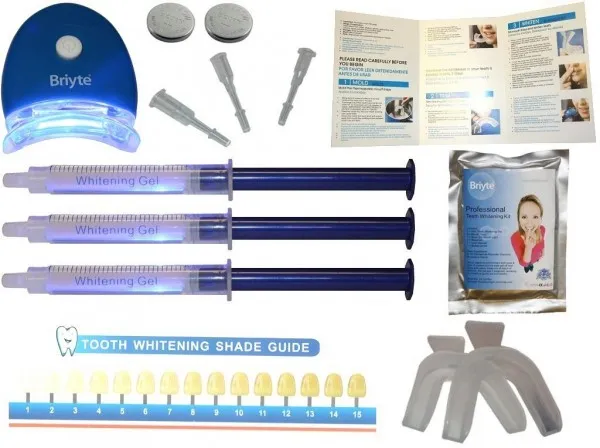
Over-the-counter (OTC) teeth whitening products are readily available in pharmacies and supermarkets across the UK. These products offer a convenient and cost-effective way to whiten your teeth at home. However, it is important to remember that the effectiveness of OTC products may vary, and they typically contain lower concentrations of bleaching agents than professional treatments. It is essential to follow the instructions carefully and be aware of potential side effects. While OTC products can be a good option for mild discoloration or for maintaining the results of professional treatments, it is crucial to consult a dentist before using these products, especially if you have any pre-existing dental conditions or concerns.
Whitening Toothpastes
Whitening toothpastes are a common and easily accessible option for teeth whitening. They contain mild abrasives and chemical agents that help to remove surface stains from your teeth. While whitening toothpastes can improve the appearance of your teeth, they usually do not change the natural color of your teeth. The abrasives help to polish the teeth, removing stains caused by coffee, tea, and other foods and drinks. It is important to note that the effectiveness of whitening toothpastes is limited compared to professional treatments. Regular use can help maintain a brighter smile, but they are not designed to significantly lighten the shade of your teeth. Be careful not to brush too aggressively, as this can damage your enamel and lead to sensitivity.
Whitening Strips
Whitening strips are thin, flexible strips coated with a bleaching agent, typically hydrogen peroxide. They are applied directly to your teeth and left in place for a specified amount of time, usually for 30 minutes each day. Whitening strips are a popular choice because they are relatively affordable and easy to use. They can effectively remove surface stains and slightly lighten the shade of your teeth. However, the results may not be as dramatic as with professional treatments. It is crucial to follow the instructions carefully to avoid any side effects, such as gum irritation or uneven whitening. Some people may experience temporary tooth sensitivity while using whitening strips.
Whitening Pens

Whitening pens are another convenient option for teeth whitening. These pens contain a bleaching gel that is applied directly to the teeth using a brush or applicator. Whitening pens are portable and easy to use, making them suitable for touch-ups on the go. They are often used to target specific stains or to maintain the results of other whitening treatments. The effectiveness of whitening pens varies depending on the concentration of the bleaching agent and the frequency of use. Results may be less noticeable than with other methods, but whitening pens can be a practical option for maintaining a brighter smile. It is important to read the instructions carefully and avoid applying the gel to your gums.
How to Choose the Right Teeth Whitening Method
Choosing the right teeth whitening method depends on several factors, including the severity of your tooth discoloration, your budget, your desired results, and your lifestyle. Consulting with a dentist is the best way to determine the most appropriate treatment for your individual needs. They can assess your oral health, discuss your expectations, and recommend the best course of action. If you have significant staining or want dramatic results, professional in-office whitening may be the best choice. If you are looking for a more affordable and convenient option, take-home whitening kits or over-the-counter products may be suitable. It is essential to consider the potential risks and side effects of each method and to follow the instructions carefully to ensure the best possible outcome.
Factors to Consider
Several factors should influence your decision when choosing a teeth whitening method. The degree and type of staining play a significant role. Surface stains caused by food and drinks may be easily removed with whitening toothpastes or strips. Deeper stains may require more potent treatments like professional whitening. Your budget is also a crucial consideration, as professional treatments are generally more expensive than over-the-counter products. Your desired results are also vital; in-office whitening provides the most immediate and dramatic results, while other methods may offer more gradual improvements. Your sensitivity to the bleaching agents and any pre-existing dental conditions should also be discussed with your dentist. Your lifestyle also plays a factor, with home-based options being more convenient for people with busy schedules.
Cost
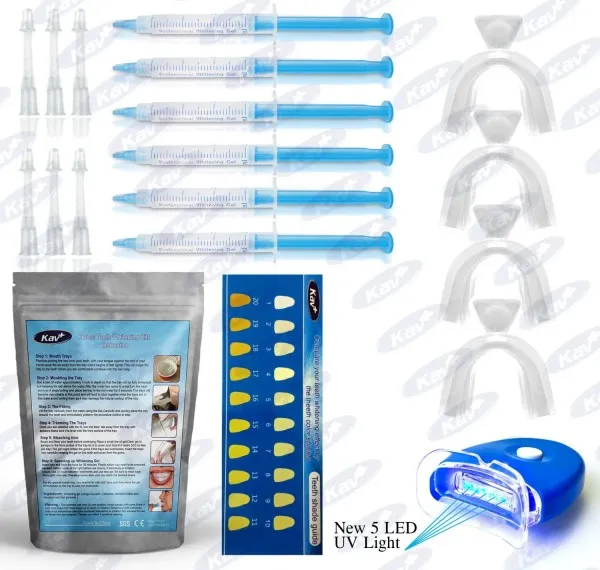
The cost of teeth whitening varies widely depending on the method chosen. Professional in-office whitening is typically the most expensive option, while take-home kits are usually more affordable. Over-the-counter products, such as whitening toothpastes and strips, are the least expensive. The cost also depends on the geographic location and the dentist’s fees. It’s important to consider the long-term value and the potential for achieving your desired results when evaluating the cost. While professional treatments may have a higher upfront cost, they often provide more significant and longer-lasting results. It is recommended to discuss the cost with your dentist and consider the investment in your smile’s appearance and your overall confidence.
Sensitivity
Tooth sensitivity is a common side effect of teeth whitening, as the bleaching agents can temporarily affect the tooth’s enamel. The level of sensitivity varies from person to person and depends on the concentration of the bleaching agent and the duration of the treatment. Some people experience mild sensitivity, while others may have more significant discomfort. If you have sensitive teeth, it’s crucial to discuss this with your dentist before starting any whitening treatment. They may recommend a lower concentration of the bleaching agent or suggest using a toothpaste designed for sensitive teeth. Avoiding very hot or cold foods and drinks during the treatment period can also help to minimize discomfort. Usually, the sensitivity is temporary and subsides after the treatment is completed.
Desired Results
The desired results should guide your choice of teeth whitening method. If you are seeking a dramatic change and immediate results, in-office whitening is the best option. This method can lighten your teeth by several shades in a single appointment. If you are looking for a more gradual improvement or prefer the convenience of home use, take-home whitening kits or over-the-counter products may be suitable. It is essential to set realistic expectations and understand that the results may vary depending on the severity of the staining and your individual tooth structure. Discuss your desired results with your dentist, who can recommend the most appropriate treatment to meet your needs.
Teeth Whitening Advice in the UK
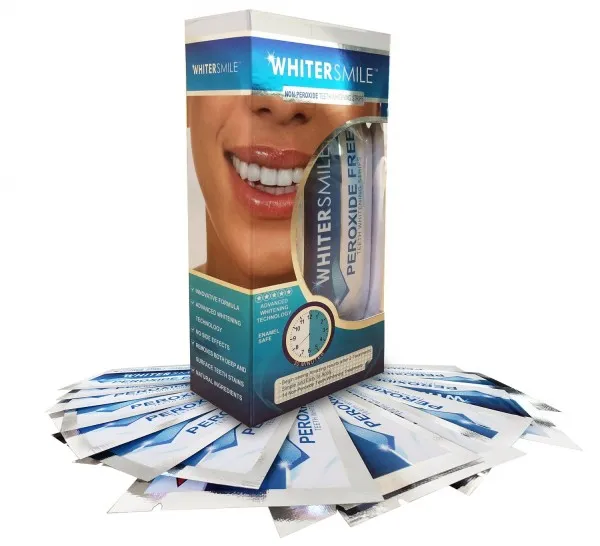
In the UK, the legal and ethical guidelines regarding teeth whitening are strictly regulated to ensure consumer safety and effective treatments. It’s essential to be aware of these regulations to ensure that you receive treatment from a qualified professional. Always consult with a registered dentist or dental professional before undergoing any teeth whitening procedure. They can assess your oral health and determine if teeth whitening is appropriate. They will also provide professional advice tailored to your individual needs. Be wary of unlicensed practitioners or services that offer excessively low prices, as they may not adhere to the required standards. Remember, the goal is to achieve a brighter smile safely and effectively, and that always starts with professional guidance and a well-informed approach.
Consult with a Dentist
Consulting with a dentist is the most critical step in the teeth whitening process. Your dentist will assess your overall oral health and determine if teeth whitening is appropriate for you. They will examine your teeth and gums to ensure there are no underlying issues, such as cavities or gum disease, that need to be addressed before whitening. The dentist can also discuss your expectations, the available treatment options, and the potential risks and side effects. They can provide tailored advice based on your specific needs and help you choose the most suitable method. Consulting with a dentist ensures that your teeth whitening treatment is safe, effective, and delivers the desired results while maintaining your oral health. They can also monitor your progress and provide any necessary adjustments or follow-up care.
Follow Instructions Carefully
Whether you choose professional whitening or an at-home treatment, carefully following the instructions is essential for achieving the best results and minimizing potential side effects. Read all instructions provided with the product or by your dentist before starting the treatment. Ensure you understand how to apply the whitening agent, the recommended duration of use, and any precautions. Overusing or misusing whitening products can lead to tooth sensitivity, gum irritation, or uneven whitening. If you have any questions or concerns, do not hesitate to contact your dentist or the product manufacturer. Consistent and proper use according to the instructions ensures effective whitening and helps you maintain a healthy smile. Proper use also minimizes potential side effects and maximizes the lifespan of your whitening results.
Manage Sensitivity
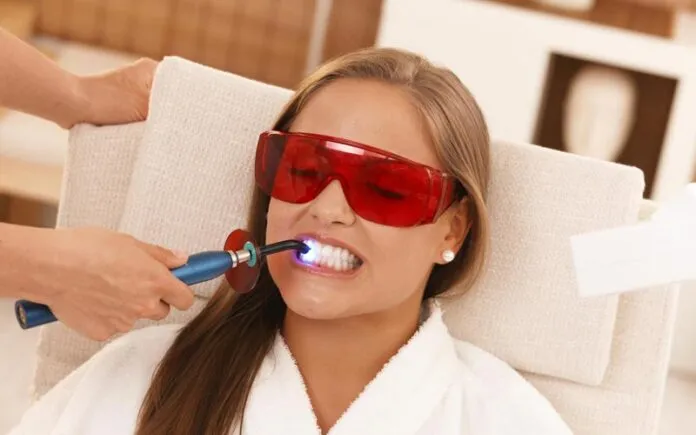
Tooth sensitivity is a common side effect of teeth whitening, and managing it effectively can improve your experience. If you experience sensitivity, there are several steps you can take. Use a toothpaste specifically designed for sensitive teeth. These toothpastes contain ingredients that help to block the nerve endings and reduce sensitivity. Avoid consuming very hot or cold foods and drinks, as these can exacerbate sensitivity. Your dentist may recommend using a fluoride treatment to strengthen your enamel and reduce sensitivity. You may also consider taking breaks during the whitening process to allow your teeth to recover. It is important to communicate any sensitivity concerns with your dentist, as they can provide tailored advice and guidance.
Maintain Your White Smile
Maintaining your newly whitened smile requires a proactive approach to oral hygiene and lifestyle choices. Proper care will help to prolong the effects of teeth whitening and keep your teeth looking their best. This includes maintaining a consistent oral hygiene routine, being mindful of your diet and lifestyle choices, and undergoing regular dental check-ups and cleanings. By adopting these practices, you can enjoy a brighter smile for a longer period and maintain optimal oral health. Remember, teeth whitening is not a permanent solution, and ongoing care is essential to protect and preserve your investment in a more confident and radiant smile.
Oral Hygiene Routine
Maintaining a consistent oral hygiene routine is essential for preserving your white smile. Brush your teeth at least twice a day with a fluoride toothpaste. Floss daily to remove plaque and food particles from between your teeth. Consider using a mouthwash to help remove any remaining debris and freshen your breath. Regular dental check-ups and professional cleanings are also crucial for maintaining good oral health and removing surface stains that may affect the appearance of your smile. Your dentist can also provide personalized recommendations for oral hygiene practices and detect any potential problems early on. A comprehensive oral hygiene routine is the foundation for a healthy and bright smile.
Diet and Lifestyle
Your diet and lifestyle choices significantly impact the longevity of your teeth whitening results. Certain foods and drinks can stain your teeth and diminish the effects of whitening treatments. Limiting the consumption of coffee, tea, red wine, and dark-colored foods can help maintain your white smile. Smoking is a major cause of tooth discoloration, so quitting smoking will significantly improve the appearance of your teeth. Rinse your mouth with water after consuming staining foods and drinks, and brush your teeth soon after eating or drinking anything that could stain them. Regular dental check-ups, along with a healthy diet and lifestyle, will help keep your teeth bright and healthy.
Potential Risks and Side Effects of Teeth Whitening
Although teeth whitening is generally considered safe, it is essential to be aware of the potential risks and side effects. These can vary depending on the method used and your individual oral health. Understanding these risks helps you make informed decisions and take appropriate precautions. While most side effects are temporary, it is crucial to consult with your dentist to address any concerns and minimize potential complications. The benefits of a brighter smile are often worth the minor risks, but awareness and informed consent are essential.
Teeth Sensitivity
Tooth sensitivity is one of the most common side effects of teeth whitening. This can manifest as sharp, temporary pain when consuming hot or cold foods and drinks. This is caused by the bleaching agents penetrating the enamel and temporarily affecting the nerves in your teeth. The level of sensitivity varies from person to person and often subsides within a few days or weeks after completing the treatment. Using a toothpaste designed for sensitive teeth and avoiding extreme temperatures can help manage the sensitivity. Your dentist may also recommend fluoride treatments to strengthen your enamel and reduce sensitivity. Typically, sensitivity is a temporary inconvenience that resolves with proper care and time.
Gum Irritation
Gum irritation is another potential side effect of teeth whitening. It can occur if the bleaching agent comes into contact with your gums, causing redness, swelling, and tenderness. This is more common with at-home whitening methods if the trays do not fit properly, or if the product is used incorrectly. Professional whitening procedures are typically performed with protective measures, such as a rubber dam, to prevent the bleaching agent from contacting the gums. If you experience gum irritation, discontinue the treatment immediately and consult your dentist. They may recommend adjusting the application method or using a milder bleaching agent. Gum irritation is usually temporary and resolves once the treatment is stopped or adjusted.
Uneven Whitening
Uneven whitening can occur if some areas of your teeth whiten more than others. This can be caused by various factors, including the uneven application of the bleaching agent, variations in the thickness of the enamel, or the presence of fillings or crowns that do not respond to the whitening treatment. Certain dental work, like crowns and fillings, will not whiten. Uneven whitening can also occur if you have existing dental issues, such as intrinsic stains. Your dentist can help address uneven whitening by adjusting the treatment plan or recommending alternative solutions. Following instructions carefully and using the correct application techniques will also help minimize the risk of uneven whitening. In more severe cases, alternative cosmetic procedures may be considered.
Alternatives to Teeth Whitening
If teeth whitening is not the right choice for you, or if you are looking for a more permanent solution, several alternatives are available. These options include veneers, dental bonding, and crowns. The best alternative will depend on your specific needs and goals, so it is essential to discuss these options with your dentist. They can assess your oral health and recommend the most appropriate treatment. Each alternative offers a unique set of benefits, so a thorough evaluation is essential to ensure the desired aesthetic result and long-term oral health.
Veneers
Veneers are thin, custom-made shells that are bonded to the front surface of your teeth. They are an excellent option for addressing a variety of cosmetic concerns, including discoloration, chips, cracks, and gaps. Veneers are made from porcelain or composite resin and can be designed to match the color and shape of your natural teeth. The procedure typically involves removing a small amount of enamel from your teeth to make room for the veneers. Veneers offer a long-lasting solution to improve the appearance of your smile and can be a good alternative to teeth whitening if the staining is severe or the teeth have structural problems. Veneers can significantly improve your smile’s aesthetics, but they are a more involved procedure than teeth whitening.
Dental Bonding
Dental bonding involves applying a tooth-colored resin material to the teeth and hardening it with a special light. It is used to repair chips, cracks, and gaps, and can also improve the color and shape of your teeth. The resin is matched to the color of your natural teeth, and the dentist shapes and polishes it to create a natural-looking result. Dental bonding is a less invasive and more affordable option than veneers, but it may not be as durable or long-lasting. Bonding is a good choice for minor cosmetic improvements and can often be completed in a single visit. However, bonding may be prone to staining over time, and it may not be suitable for severe discoloration or structural damage.
Crowns
Crowns, also known as caps, are custom-made covers that are placed over the entire tooth to restore its shape, size, strength, and appearance. Crowns can be made from various materials, including porcelain, ceramic, and metal. Crowns are often used to repair severely damaged or decayed teeth and can also be used to improve the aesthetics of your smile. The procedure involves removing the damaged portion of the tooth and preparing it to receive the crown. Crowns are a more durable and long-lasting solution than dental bonding, but they are also more invasive and expensive. Crowns provide comprehensive protection and restoration for teeth that have undergone significant damage and require more than a cosmetic fix.
